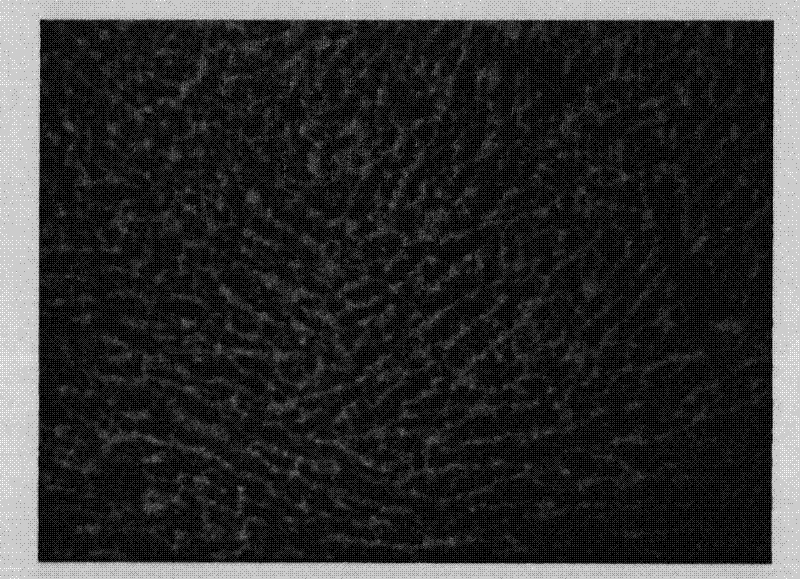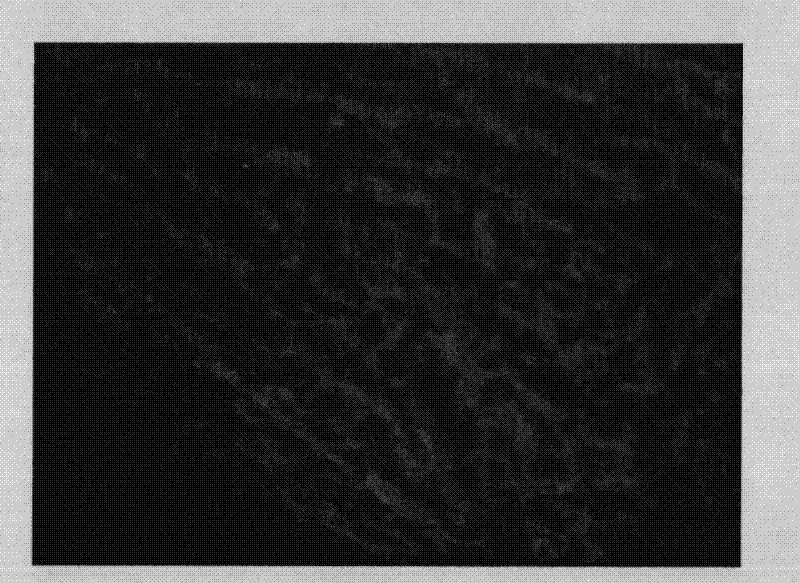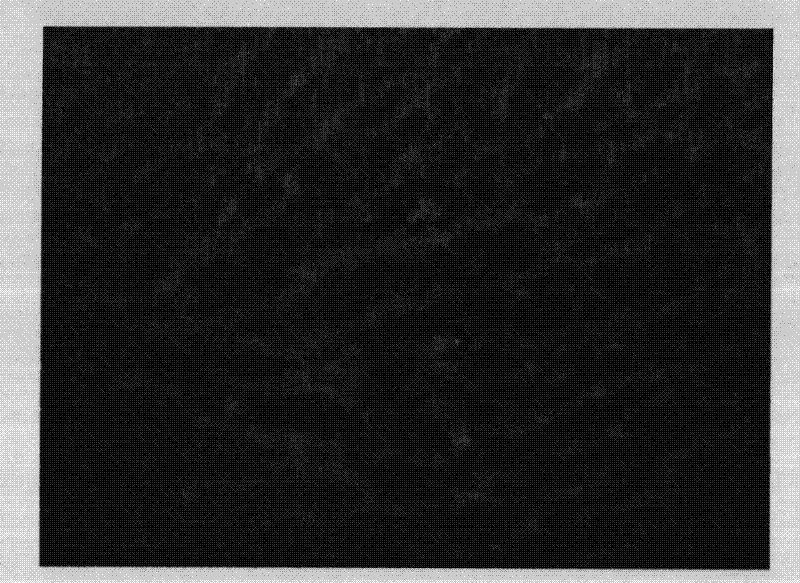Preparation and application of nerve tissue matrix derived tissue engineering scaffold material
A technology of tissue engineering scaffold and nerve tissue, which is applied in medical science, catheters, prostheses, etc., can solve the problems of inconsistent composition, poor biocompatibility, tube wall collapse, etc., and achieve good biocompatibility, no Effect of immune rejection, uniform distribution of pores
- Summary
- Abstract
- Description
- Claims
- Application Information
AI Technical Summary
Problems solved by technology
Method used
Image
Examples
Embodiment 1
[0052] Example 1: Preparation of nerve matrix-derived scaffold material
[0053] Take the canine sciatic nerve, remove the muscle and fat tissue around the nerve, rinse with sterile distilled water 2-3 times, 3-5 minutes each time; add to the phosphate buffer containing protease inhibitors 0.005-0.1% PMSF and 0.01-1% EDTA , crushed into small pieces by a pulverizer; expand the tissue with sodium citrate buffer (pH3-5), shake continuously at 4°C for 24-72 hours; wash 2-3 times with sterile distilled water, 3-5 times each time minutes; add 0.5-2% Triton X-100 in 10mM / L Tris-HCL buffer (pH7.5) at 4°C, which also contains protease inhibitors 0.005-0.1% PMSF and 0.01-1% EDTA, shake continuously for 24-72 hours to remove cell components; wash repeatedly with PBS after centrifugation; digest with DNase and RNase at 37°C for 6-48 hours; add 2M urea solution to dissolve for 48-72 hours, then mechanically pulverize again; centrifuge at 6000rpm for 20 minutes The undissolved substances ...
Embodiment 2
[0056] Example 2: Preparation of three-dimensional porous orientation scaffold
[0057] Use dilute acetic acid with pH=3.2 as the solvent to make the neuromatrix-derived powder into a suspension with a concentration of 3%, stir well, and centrifuge to remove air bubbles, then inject the centrifuged slurry into a mold, and place it vertically in a -40°C Pre-freeze on a frozen metal plate, store at -40°C for at least 24 hours after freezing completely, and then transfer to a freeze dryer for sublimation drying. The ice phase was sublimated under vacuum (60 After disinfection, seal and store at 4°C.
[0058] Physical and chemical performance testing: under an optical microscope, it can be seen that the stent pore size is uniform and the pores are interconnected (see Figure 7 ). Observation by scanning electron microscope shows that the stent pore size and distribution are relatively uniform, and the gaps are interconnected, and the pore size is 200-300 microns.
Embodiment 3
[0059] Example 3: Preparation of Nerve Regeneration Conduit
[0060] The neuromatrix-derived powder obtained in Example 1 was freeze-dried and dissolved in hexafluoroisopropanol (HFP), stirred thoroughly to prepare the solution, vacuumed to remove air bubbles, and then added to the syringe of the electrospinning instrument. Adjust the voltage of the electrospinning equipment, the distance between the needle and the receiving device, and the flow rate of the solution to prepare microfilaments with uniform thickness to form a thin film. Depending on the receiving device of the electrospinning equipment, a film with a certain direction or disorder can be prepared. The prepared electrospun film is taken out from the mould, and the distance from the light source is 5-10 cm, the wavelength is 258 nm, and the ultraviolet rays are cross-linked for 2-8 hours; For: EDC 50mM; NHS 20mM) After cross-linking at 4°C for 24h, rinse with three distilled water for 6 times, and freeze-dry. Wra...
PUM
 Login to View More
Login to View More Abstract
Description
Claims
Application Information
 Login to View More
Login to View More - R&D
- Intellectual Property
- Life Sciences
- Materials
- Tech Scout
- Unparalleled Data Quality
- Higher Quality Content
- 60% Fewer Hallucinations
Browse by: Latest US Patents, China's latest patents, Technical Efficacy Thesaurus, Application Domain, Technology Topic, Popular Technical Reports.
© 2025 PatSnap. All rights reserved.Legal|Privacy policy|Modern Slavery Act Transparency Statement|Sitemap|About US| Contact US: help@patsnap.com



